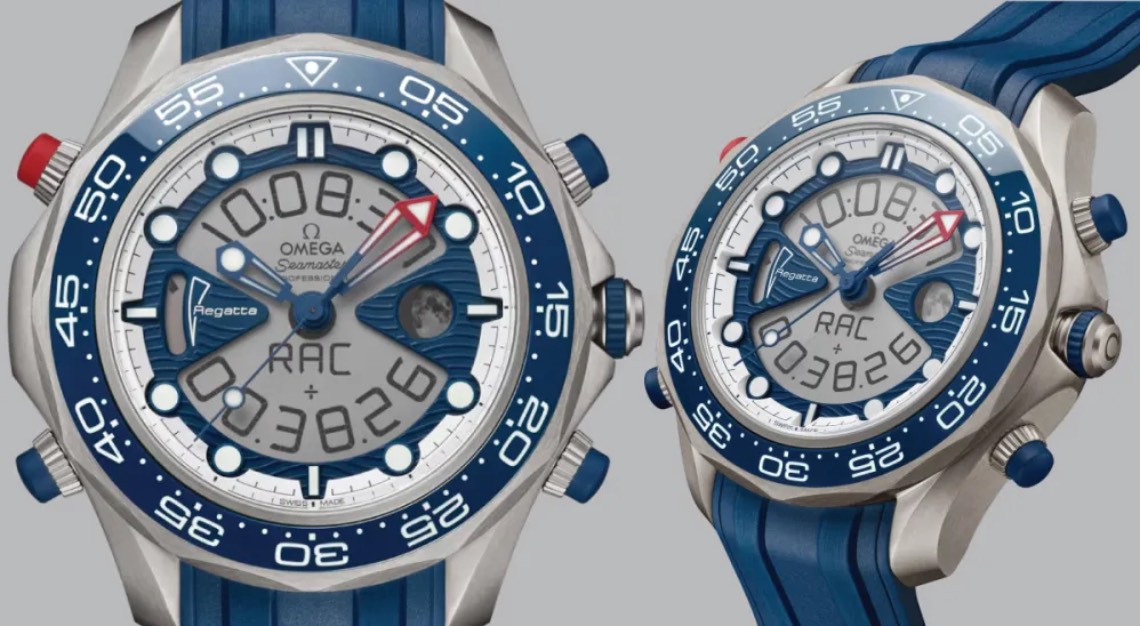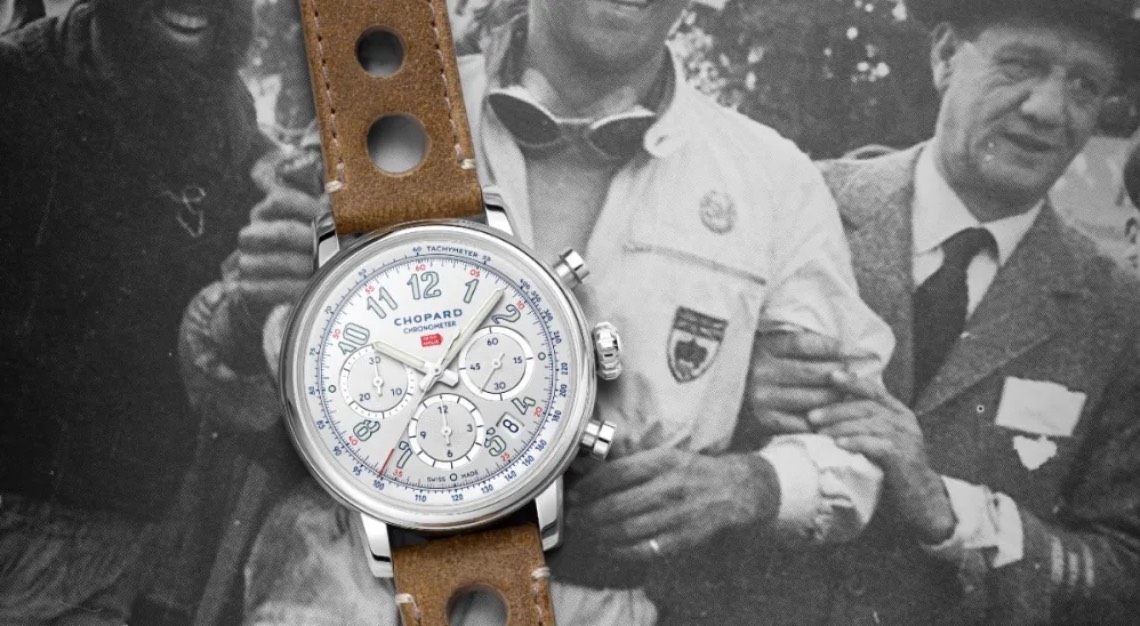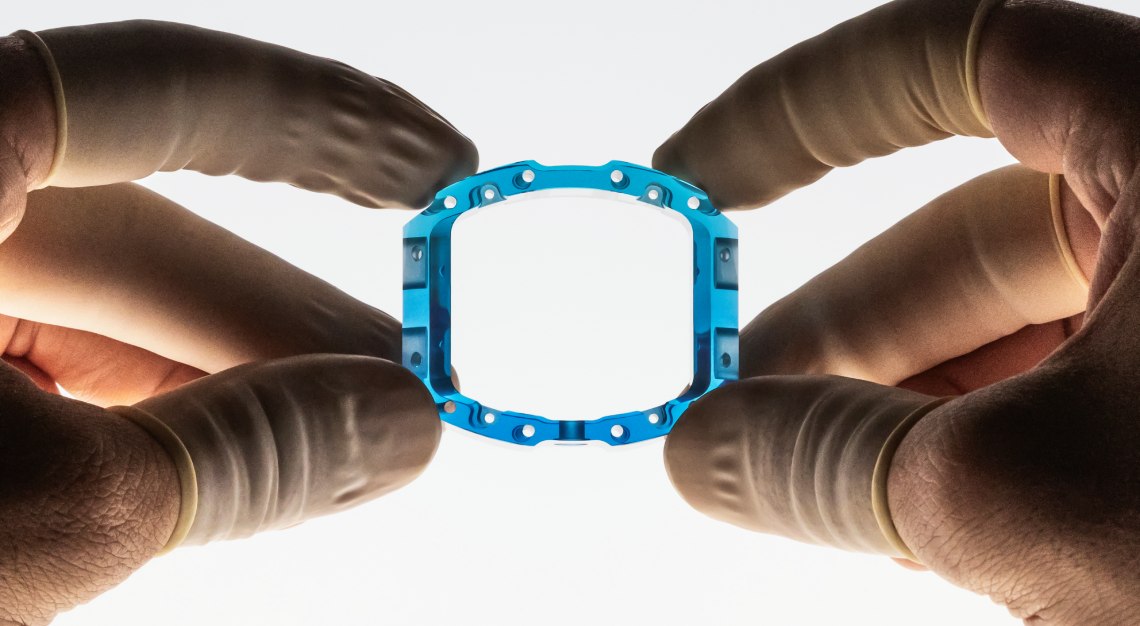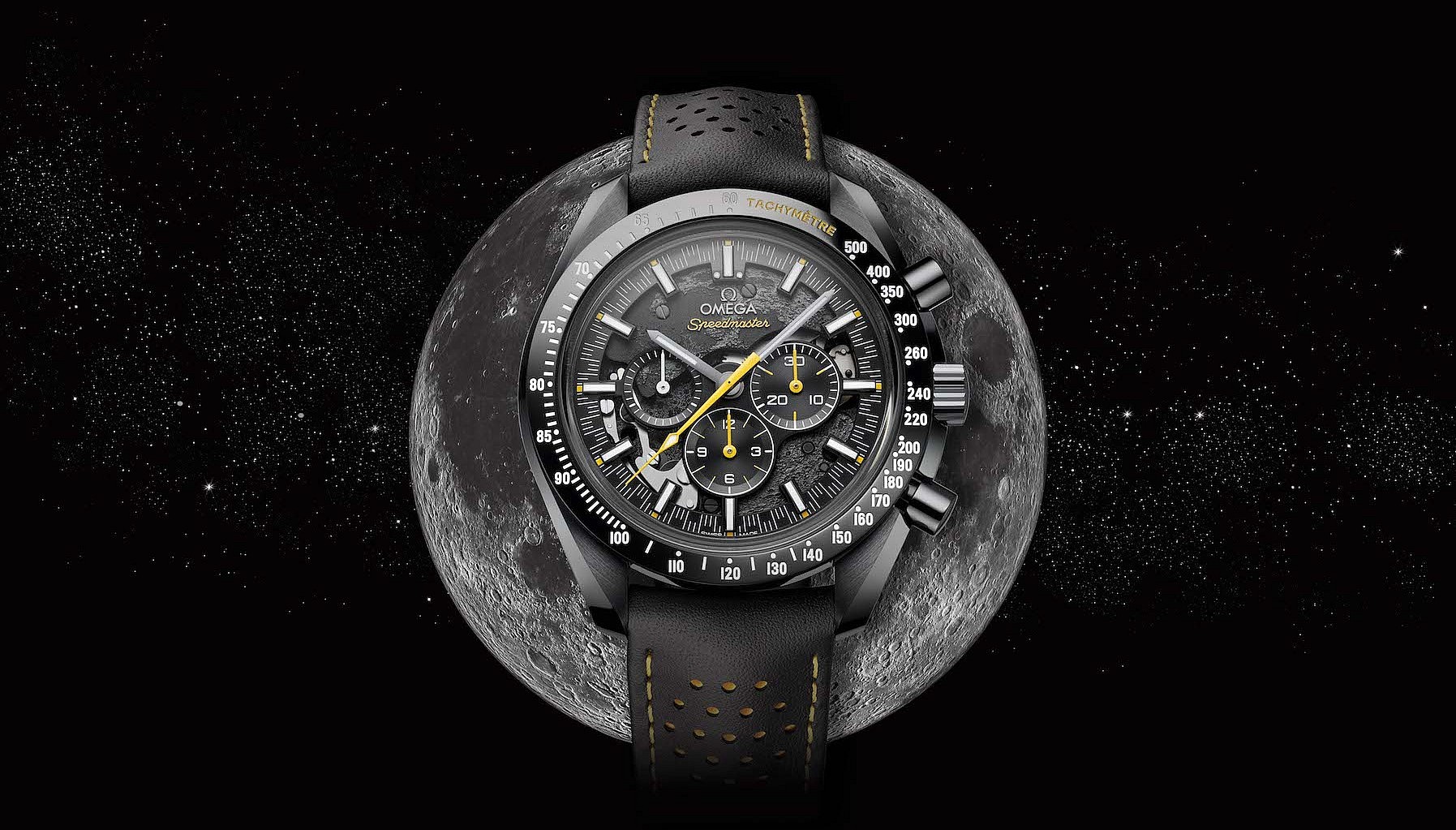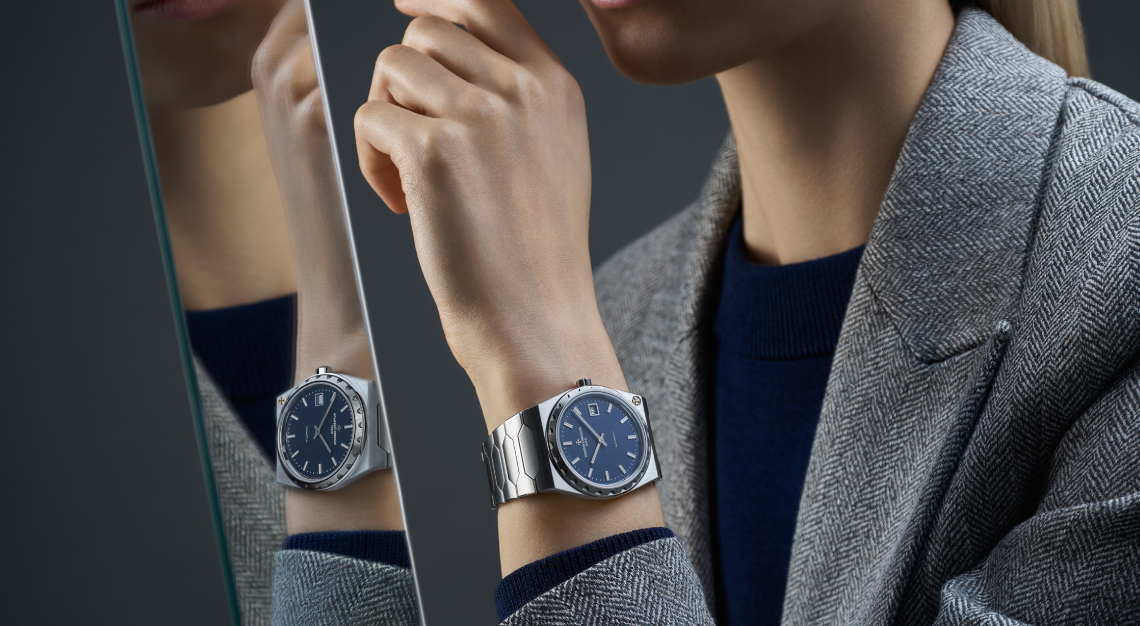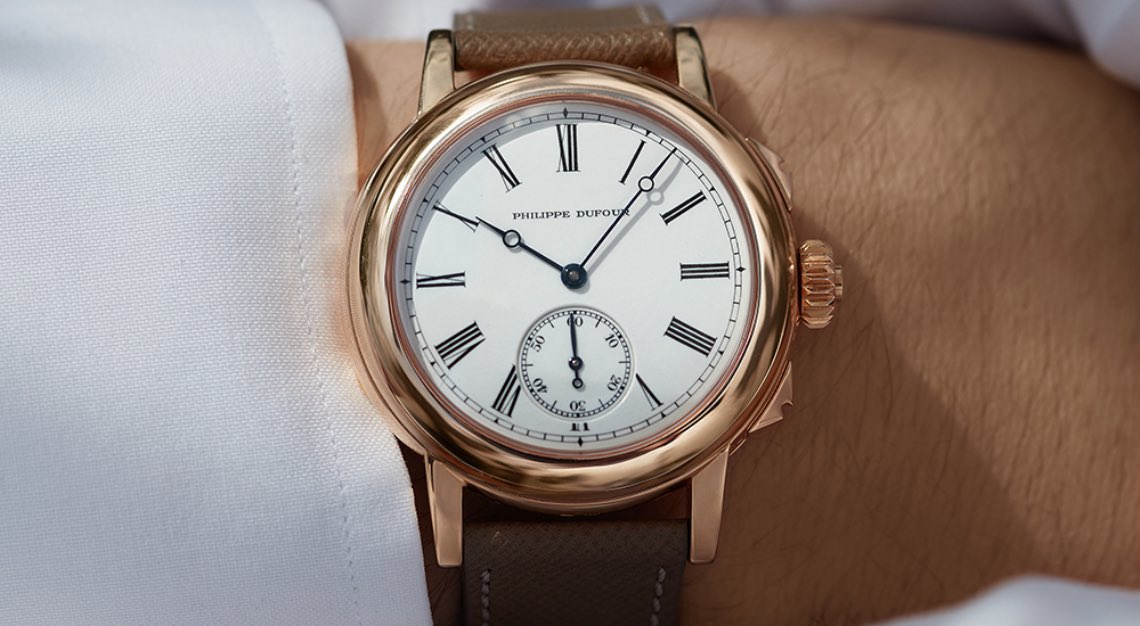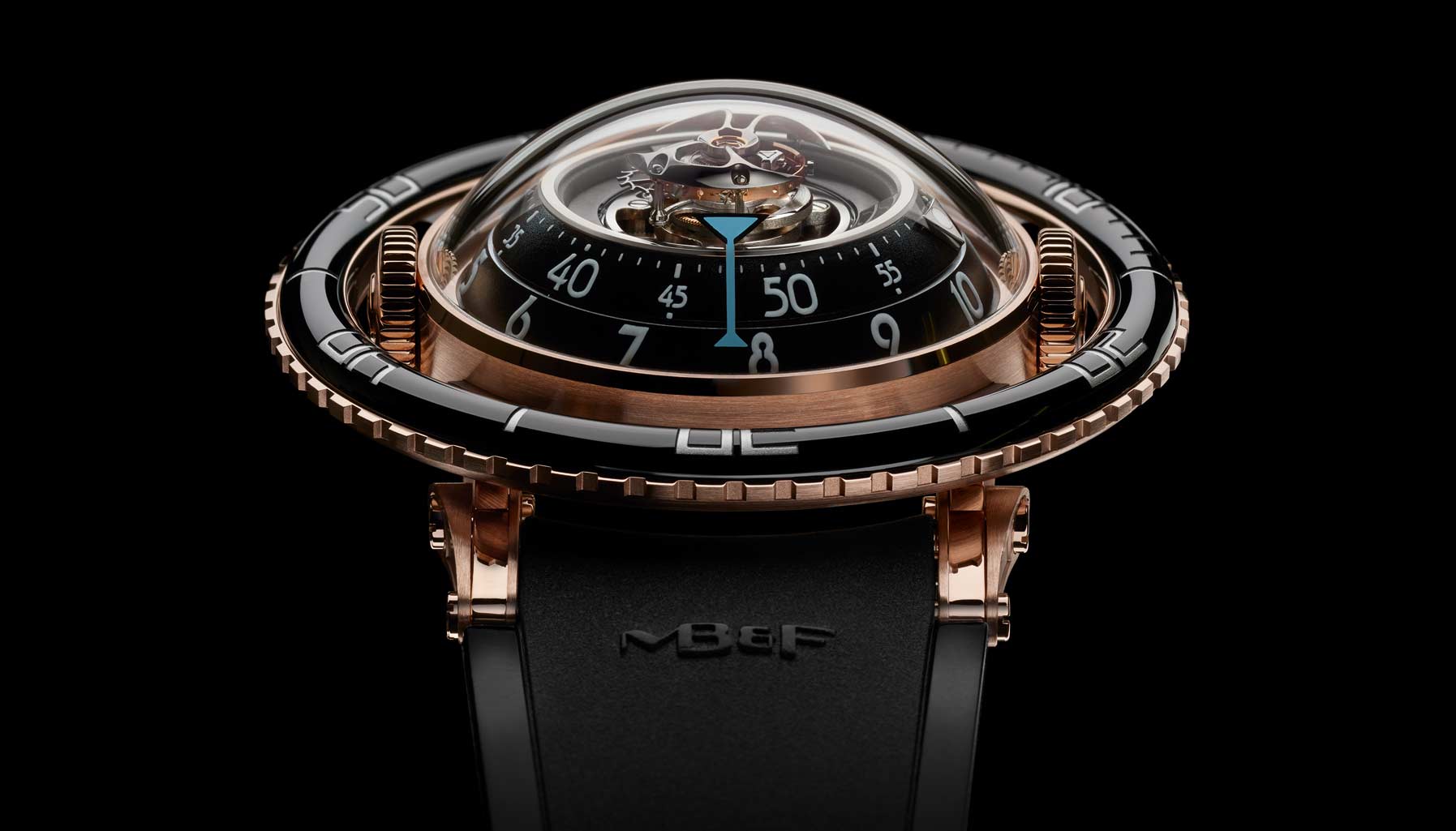Tool watches have largely become anachronistic play-things, but this hulking titanium regatta timer from Omega is the real deal
It helps not to think too hard about heritage tool watches, because the category has fallen into something of a conundrum. The first dedicated timepieces for pilots, divers, explorers, doctors, and all the rest were born as precision instruments, but the world they were created to measure kept a much slower pace than today. Time, ironically, has mostly passed the mechanical tool watch by: Strip away the varnish of nostalgia and you’re left with the fact that a chronograph wristwatch is about as useful to a modern-day Formula One driver as a mercury thermometer.
Of course it’s mostly those F1 racers, competitive pilots, astronauts, and the like who actually require precision at the level of electronic instrumentation; the rest of us are happy to be reminded of how satisfying it is to have a stopwatch or telemeter on hand exactly when one is needed. But it does mean that much of the category is more of an aesthetic than practical definition—an over-engineered piece of outmoded technology, best understood as a sort of dress-up meant to evoke the rough, elemental glory days of air travel, mountaineering, motor racing, or whatever you happen to be into. (On a fundamental level, a mechanically driven tool watch is like a motorcycle powered by hamsters: It’s feasible, but you can’t seriously claim that performance and precision are your top priorities.) Which makes coming across an actual high-end instrument watch in the wild something of a treat.
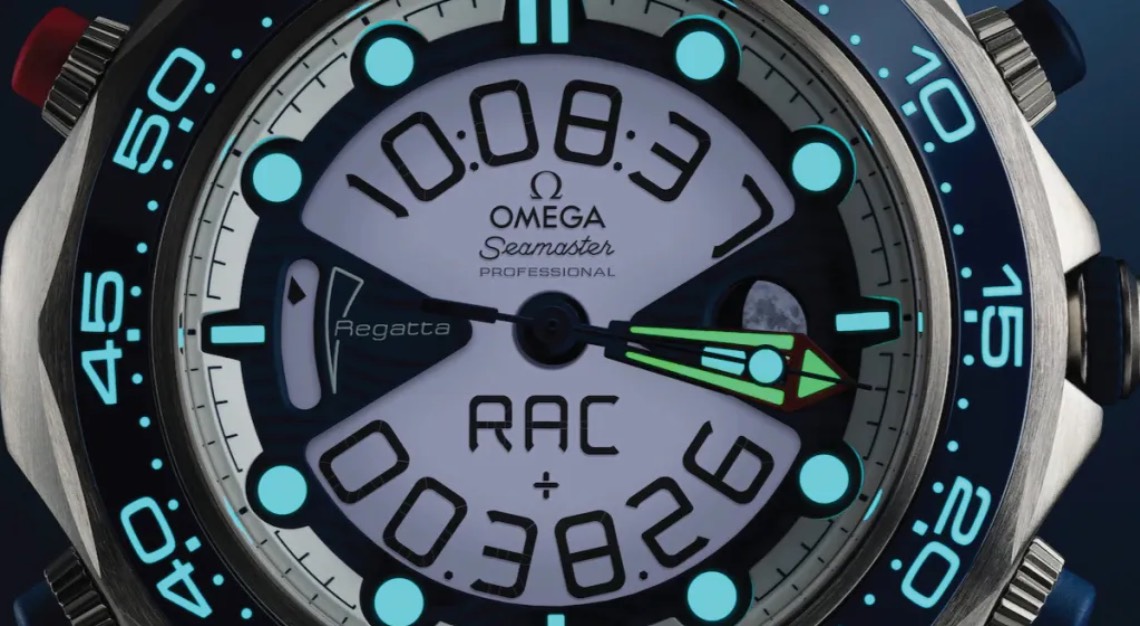
That’s what Omega unveiled in September at the start of the semifinals of the Louis Vuitton Cup, in Barcelona, with its US$7,400 Seamaster Regatta, the most technologically advanced timepiece in a three-model lineup celebrating the 37th America’s Cup (the Swiss watchmaker has been the official timekeeper for the last three contests) alongside a special-edition Seamaster Diver 300M and the Seamaster Planet Ocean Emirates Team New Zealand. The 46.75 mm sailingwatch is built from Grade 5 titanium, features Omega’s caliber 5701 quartz chronograph movement (accurate to seven seconds per year), a combination of analog hands and LCD dial display, four rubberized chronograph pushers, and a resonator cavity to increase the volume of its various chimes and alarms. The pushers, arranged symmetrically at two, four, eight, and 10 o’clock, control a number of functions including a temperature gauge, accelerometer, perpetual calendar, and regatta race countdown; a backlit mode amplifies digital legibility and tucks the skeletonized sword hands out of the way just past 3 o’clock. The dial includes a graphic moonphase indicator (customisable to hemisphere) and there’s an electronic sailing log functionality that can store timestamps from the race, though there’s no way to export that data.
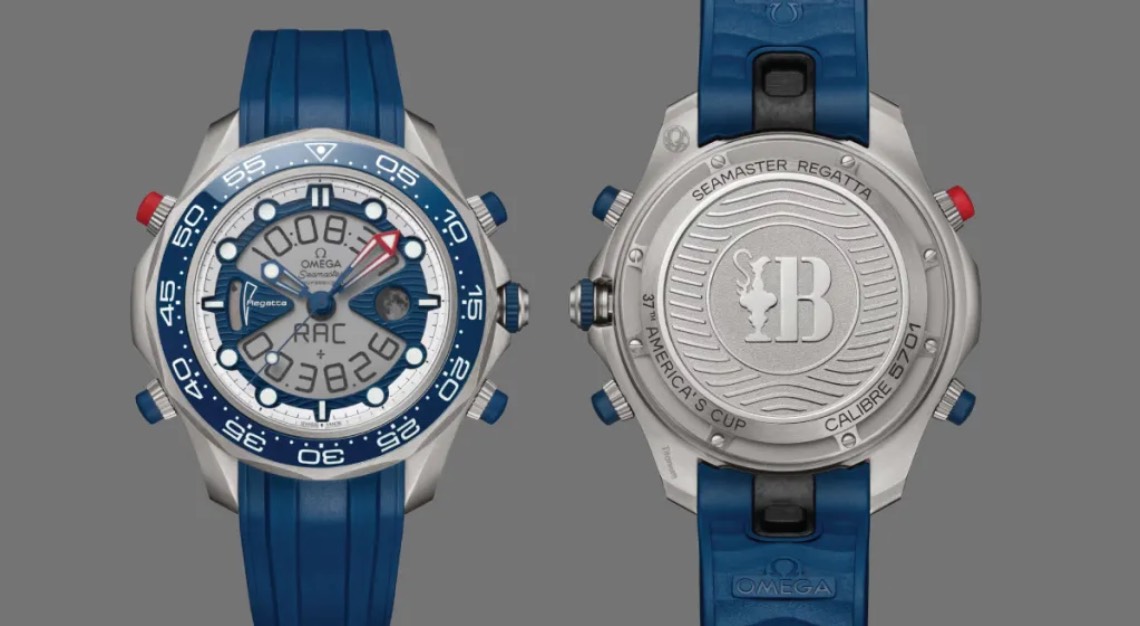
The nearly 47 mm diameter sounds enormous but wears surprisingly smaller thanks to both the lightweight titanium construction and the satisfying visual balance of the concentric blue and white color scheme, including the chunky, bi-directional diver-style bezel. Still, it sits like an instrument on the wrist—prominent, boldly legible, multifunctional—and watching the contests from the water, the AC75 class foiling yachts slicing across the horizon at over 50 knots, the utility of the niche timepiece is apparent. Elite sailing is very fast indeed, with skippers piloting the high-tech hydraulic foilers via advanced electronic controls, but even at its highest level yachting is still largely measured in seconds, not milliseconds.
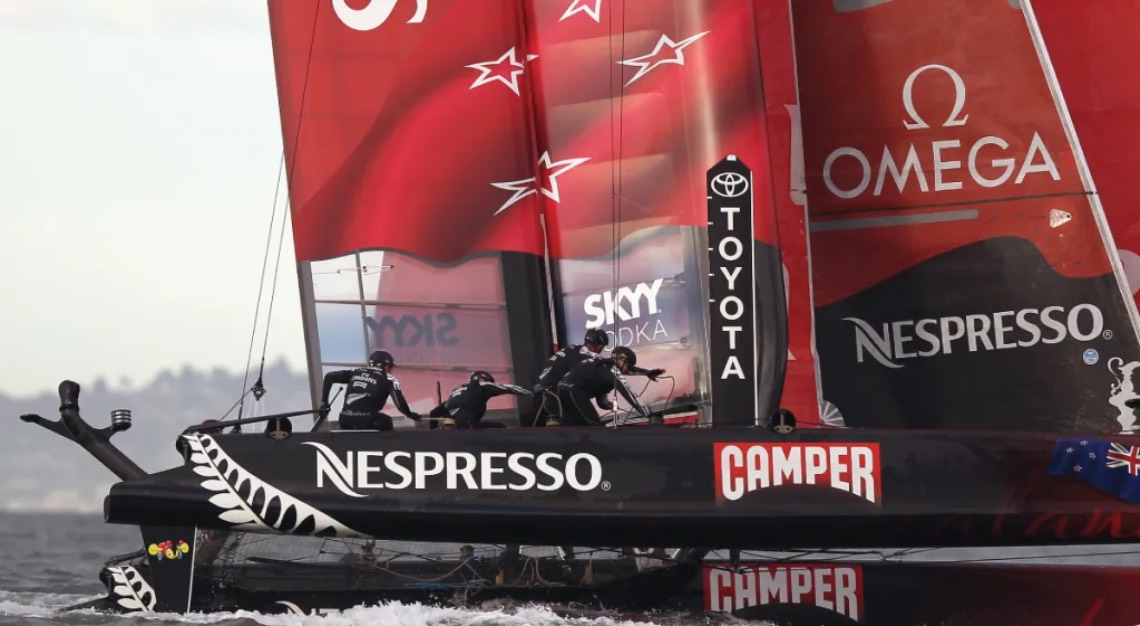
Following a two-second nail-biter between New York Yacht Club American Magic and Luna Rossa Prada Pirelli Team on TV from the top deck of the 98.5-foot Kiawah II, one image stood out: a cyclor for the victorious Prada Pirelli Team, shot from below, gulping air, legs cranking, sweat and saltwater pouring down onto the camera from the watch strapped to his wrist. For all the speed and kinetic violence of whipping a 75-foot, 7-ton yacht around a buoy in a hairpin turn, there’s something pleasingly relatable about a sport whose pace has yet to fully outstrip a purpose-built tool watch. It makes the big, colorful, quartz-powered Seamaster Regatta something of an outlier in the luxury tool watch category, in that it’s a modern luxury instrument properly engineered for a specific purpose (see: the quartz movement and a depth rating of just 50 metres, because it’s a sailing watch not a dive watch), that can keep pace with contemporary demands and is more useful today than the generations that preceded it. It’s not for everyone, and that’s the point. Which means if you see someone wearing one in the wild, think twice before challenging them to a sailing race.
This story was first published on Robb Report USA
